| |
Leave it to Leon
(a page all about leaves)

April 9, 2023 the wind delivered this leaf to my
doorstep,
thus inspiring me to make this page.
Leave it to Leon to see a sign where there might have been
mere coincidence. Or was it? I don't see any trees in this area
that have those kind of leaves.
Table of Contents
| Item |
Description |
| Introduction |
Just scroll down |
| Leaf definition & etymology |
Just scroll down |
| Leaf Symbolism |
All over the world various leaves had various meanings to
the local peoples. |
| Leaf
Superstitions |
Catch a falling leaf and have good health...
And other superstitions... |
| Leaf Figurative Language |
It should be no surprise that with the abundance of leaves
in the world that there should be figurative language and idiomatic
expressions using leaves. |
| Leaves in prophecy |
Yes. Leaves are a part of prophecy. |
| Leaves in mythology |
Why are some leaves evergreen?
Why do some leaves fall in the Fall?
Why do some leaves change color in the Fall? |
| Leaf Fun Facts |
Biggest leaf in the world.
Smallest leaf in the world.
Most poisonous leaf in the world. |
| Leaves in art |
hopefully coming soon. |
Introduction
One might think it strange to dedicate a whole
page just to leaves. But, leaves are a fascinating subject, including how
leaves have affected our language (the English Language, to be specific).
Let's start with the etymology and definition of the word "leaf".
Definition & Etymology
Definition of "leaf":
(1) the part of a plant at the extremities of the branches, which is
usually green (or greenish), and where the majority of photosynthesis takes
place. (2) a piece of paper. (3) a thin sheet of metal.
Source: Me, being a native speaker of the English
language.
Etymology: the word "leaf"
probably originated from Old Norse lyf, which connotated medicinal herbs
(usually in the form of a leaf). Over time the world "leaf"
developed the polysemy of both the
part of the plant, as well as a piece of paper. Later, the word
"leaf" came to be used for a very thin sheet of metal.
* There are cognates in many languages...
Proto-Germanic: lauba
Saxon: lof
Old Norse: lauf
Dutch: loof
High German: loub
German: laub
Gothic: laufs
Old Irish: luib
Albanian: labe
Russian: lub
Old Norse: lyf
Old English: lybb
Proto-Indo-European (PIE): leub
Source: Online
Etymology Dictionary.
NOTE: Difference
between "page" and "leaf": a page is one side of the
sheet of paper, while a leaf is the whole sheet of paper (both sides). Source.
Leaf Symbolism
| Leaf |
Symbol
of... |
Source |
Olive leaf;
Olive branch

Clipart from clipart-library.com
|
Peace and security |
This stems from (pun intended) the time when
Noah was on his ark after 40 days and 40 nights, and he sent out a dove to
see if there was any dry land nearby. The dove came back with an
olive leaf in its beak. Therefore, both the dove and the olive leaf
became symbols of peace on Earth. (Genesis 8:11) |
| Fresh leaf |
Societal prosperity |
Hebrew
symbolism. |
| Faded leaf |
Societal decay |
Hebrew
symbolism. |
Palm leaves /
Palm branch

Clipart from clipart-library.com
|
triumph |
Mesopotamian
culture. |
| Wormwood
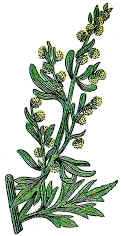
|
Bitterness
-
Wormwood is a bitter herb. It is used
metaphorically to signify bitter emotions. |
Source: Wikipedia. |
| Oak leaf
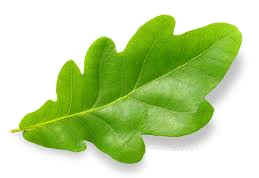
Clipart from clipart-library.com
|
Strength; stability; nobility |
Source: Symbols
Project. |
| Maple Leaf

|
Canada |
The maple leaf was chosen as the symbol for
Canada, because if its abundance and its great usefulness to the Canadian
economy. |
Laurel leaves
(in a crown)

This clipart is adapted from some clipart which I found on clipart-library.com
|
Victory |
Originally a tradition in ancient Greece to
award the winners with laurel crowns.
Roman Emperors later also wore laurel crowns to signify victory.
Source: Merriam-Webster's
Dictionary |
| Holly leaves
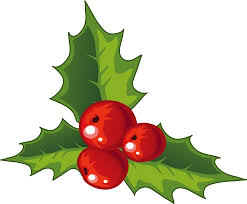
Clipart from clipart-library.com
|
- Christmas
- Nature's triumph over winter
- Protection from malevolent fairies |
Source: Trees
for Life
|
| Fig leaf |
Modesty |
Fig leaves were used to make the first
clothing.
(according to the Bible). |
| Clover leaves

|
The trinity |
St. Patrick used the three clover leaves to
represent the trinity; Father, Son, and Holy Ghost. |
| Four-leaf Clover

|
Good luck |
According to Irish tradition, to find a
four-leaf clover is very good luck. |
|
 
|
Spring = Birth & Youth
Summer = Adulthood; Prime of life
Autumn = One's elder years
Winter = Death |
The leaves that change colors and fall to the
ground in autumn are symbols of one's later years; also, symbolic of the
harvest or enjoying the fruits of one's labors. |
Chinese culture.

|
| Of the Peepal (or Bodhi) Tree
Roots of the tree = Brahma
Trunk of the tree = Vishnu
Leaves of a tree tree = Shiva |
Since leaves of trees are associated with Lord
Shiva, anything that is done with leaves is also done with prayer to Lord
Shiva. |
Indian culture.

Source: Earthday.org.
|
Leaf Superstitions
| Superstition |
Source(s) |
| All Around the World:
Burn sage leaves to clear the area of negative energy. |
Tiny
Rituals. |
| Appalachian Superstition:
Catch a falling leaf on the fist day of Fall and you'll have good
health all winter, (and according to some sources even for the next 364
days). |
Anita
Sanchez.
BlindPigandtheAcorn. |
| Greek Superstition???
Two ways of going about this superstition...
(1) Write your worries on a bay leaf (laurel leaf) and burn it,
watching your worries "float away" in the smoke to rid
yourself of worry.
(2) Write your affirmation on a bay leaf (laurel leaf) and burn
it, sending out mental prayers / affirmations / vibes to attract what
you want. |
The website doesn't say where these
superstitions come from, but I guessing Greece, because the laurel tree
and laurel leaves were sacred to them.
Outofstress. |
| Hawaiian Superstition:
If you have a hala pepe plant in your garden, the more leaves
it has the more money you'll have. That's why it is nicknamed
"the money plant". |
Hawai'i
Magazine. |
| Irish Superstition:
Find a four-leaf clover and have good luck.
Anciently, it was thought to bring love.
And in some traditions to hold one in one's hand enables one to see
fairies. |
Common knowledge.
HubPages. |
Figurative Language
| Idiomatic
Expression |
Type
of Figure of Speech |
Meaning |
| Make like a tree and leave.
(not nice to say) |
simile; pun |
Simile - "like a tree"
(because trees have leaves).
Pun - because the verb to leave is similar to the plural of leaf. |
| Turn over a new leaf. |
metaphor |
"To turn over a new leaf" is to
start a new habit, or a whole new life style. |
| Loose leaf notebook |
metaphor |
Leaf was the original word for paper and this
is probably true because before paper was invented, people wrote on
leaves. |
| Gold leaf |
metaphor |
Metallic leaf is called thusly because it is
very thin and pliable, like a leaf. |
| To rest on one's laurels. |
metonymy |
Laurel leaves symbolized success and
victory. Thus, to "rest" on one's laurels is to be
satisfied with one's success and do nothing to achieve further success.
Source: Merriam-Webster's. |
Leaves in Prophecy
| Prophet |
Prophecy |
| The Sybil (from ancient Greece) |
I know of no prophecy concerning leaves, but the
prophetess was said to write her prophecies on oak leaves. |
| Tea leaf reader (Tasseomancer) |
It is said that some can read the tea leaves left at the
bottom of the tea cup when done drinking tea. |
John "The Revelator"
(who wrote the Apocalypse /
Revelation) |
He saw in vision that there will be a "new
Earth".
And on this new Earth there will be no night.
And, there will be a crystal-clear river, with the Tree of Life on each
side, and it will bear 12 different fruits, and the leaves thereof will
be for healing.
Revelation 22:1-2 |
| Ancient Indian Sages (using palm leaves) |
Legend has it that some ancient Indian sages
wrote down everyone's life path / prophecy on palm leaves. And
these are stored in libraries around India.
Source: MyPalmLeaf |
Leaves in Mythology
| Myth
Origin / Title |
Myth
in brief |
Greek Mythology
Apollo and Daphne
and the Laurel Leaves |
Apollo insulted Eros, calling him a boy, and
telling him that a boy shouldn't have a weapon (such as Eros' bow).
I didn't know this, but apparently Eros has two kinds of
arrows; one type that make people fall in love, and another type
that makes people fall out of love or have a distaste for love.
So, to get even with Apollo for his cruel words, he shot Apollo with
the love arrow and shot Daphne with his distaste arrow.
Apollo immediately fell in love with Daphne, but Daphne didn't want
anything to do with him. She prayed for escape from Apollo's
advances and she was turned into a laurel tree.
That's why laurel leaves were used at the Olympic games, because of
her success to avoid Apollo's advances.
Source. |
Celtic Mythology
The Holly and the Oak |
The Holly tree ruled 6 months of the year
(from winter solstice
to summer solstice). The Oak tree ruled 6 months of the year from
summer solstice to winter solstice.
That's why the Holly leaves are used as decoration at winter time. |
Mongolian Mythology
The origin of the Evergreen leaves |
When there was a drought, the raven flew to
get some of gods' water at the top of the highest mountain (which
bestows eternal life) and bring it to the humans. However, on the
return journey, the raven got scared by an owl that tried to catch him
and he opened his beak, spilling all the water on the trees below.
That's how some trees became evergreens, their leaves staying green all
year long.
Source. |
Algonquin Mythology
Why leaves turn red in the Fall. |
Once there was a Great Bear (now known as
Ursa Major) that lived on Earth terrorizing all the people.
Finally, the people had had enough. Several tribes got together
a huge hunting party to hunt down and kill the bear. The bear ran,
but eventually the one of the arrows actually injured the bear.
The bear then jumped into the sky. And still "runs"
across the sky. In the Fall, the blood that spills out of the
Bear's side turns the leaves red.
Source: Farmer's
Almanac. |
Lakota Mythology
Why leaves fall in the Fall. |
When the Earth was still young, all the
plants and animals were enjoying the summer. Then, the autumn
came. It started to get colder and colder. The grass and
shrubs began to get scared, because they couldn't handle the cold.
So, the Creator, made it so that the trees would drop their leaves to
provide a warm blanket for the roots of the grass and shrubs.
In exchange for this magnanimous gift from the trees, the Creator
allowed the trees a very beautiful array to display just before the
dropping of the leaves.
Source: First
People. |
Leaf Fun Facts
| # |
Title |
Fact |
| 1 |
The plant with the BIGGEST leaves |
Victoria Boliviana Giant Lily Pad is the
largest undivided leaf in the world, measuring 3.2 meters across, and
covering an area of 7.55 m2.
Source: Guiness
World Records. |
| 2 |
The plant with the smallest leaves |
"The smallest leaf in the world is
believed to belong to the species of moss called "Fissidens
minutulus". These leaves are only 0.3 millimeters in length, which
is about one-tenth the size of a grain of salt. They are so small that
they are often difficult to see with the naked eye."
Source: AI
Bot on Quora. |
| 3 |
The most poisonous leaf in the world |
I don't know. But, the most poisonous
plant in North America is Water Hemlock, with Poison Hemlock in a close
second.
Now these photos that I've taken appear to be wild carrot, but the
hemlock looks very similar so unless you know exactly how to identify
the wild carrot and the hemlock, I would stay away!


|
| |

English |
|

Spanish
|

Korean |

Mongolian |

Chinese |
|

Parents of
Homeschool
|
|

Halloween
|
|

Thanksgiving
|
|
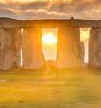
Winter Solstice
|
|

Christmas
|
|

New Years
|
|
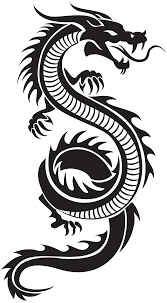
Chinese Lunar
New Year
|
|

Valentine's
|
|

|
|

Easter
|
|

All About
Dr. Seuss
|
|
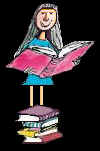
Roald Dahl
|
|
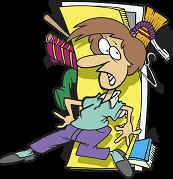
Prepper's
Pen |
|

Ways to
Help
Leon's Planet
|
|